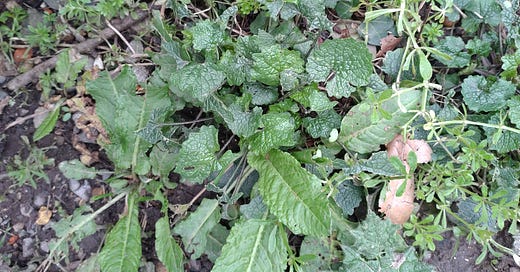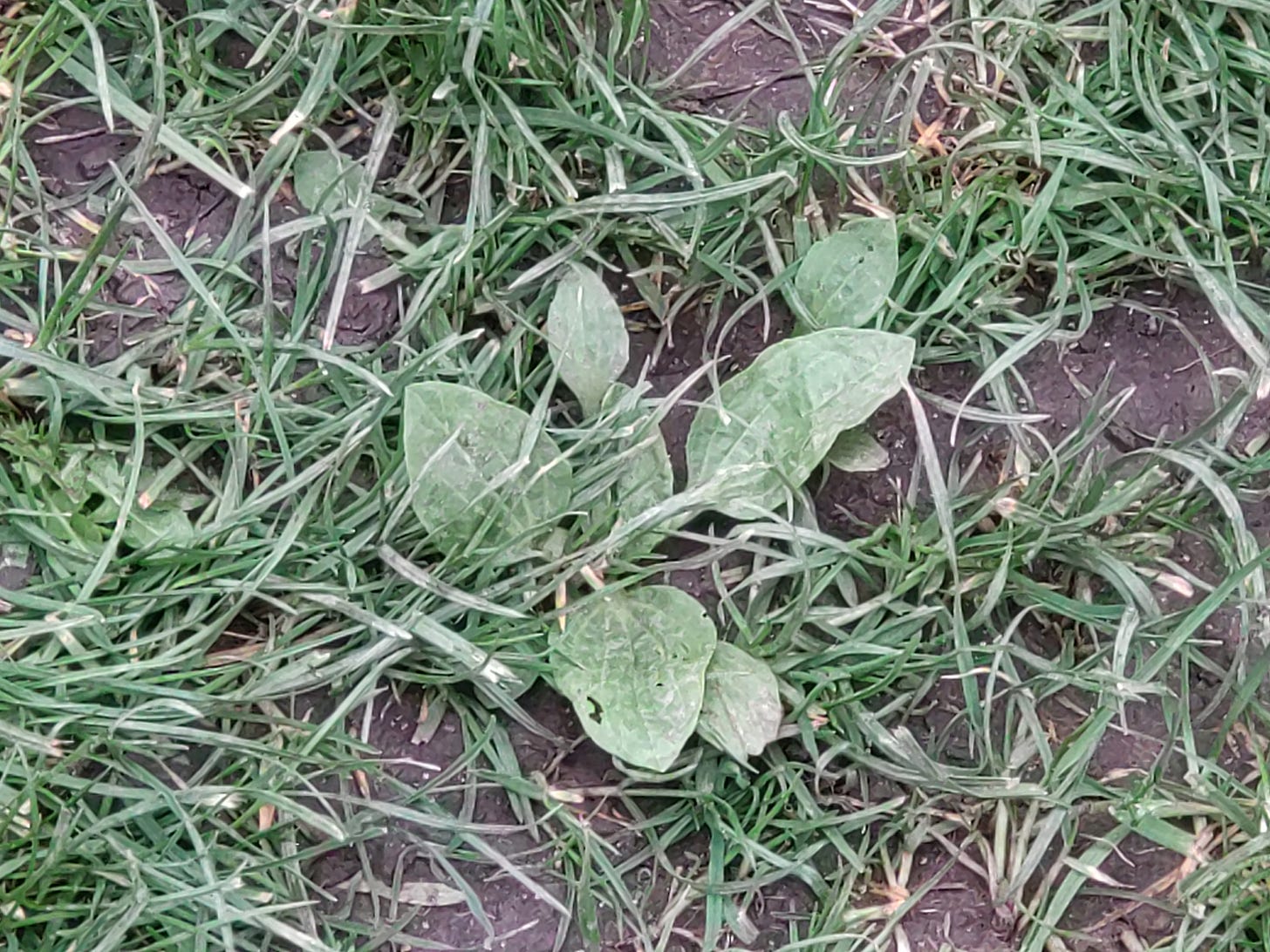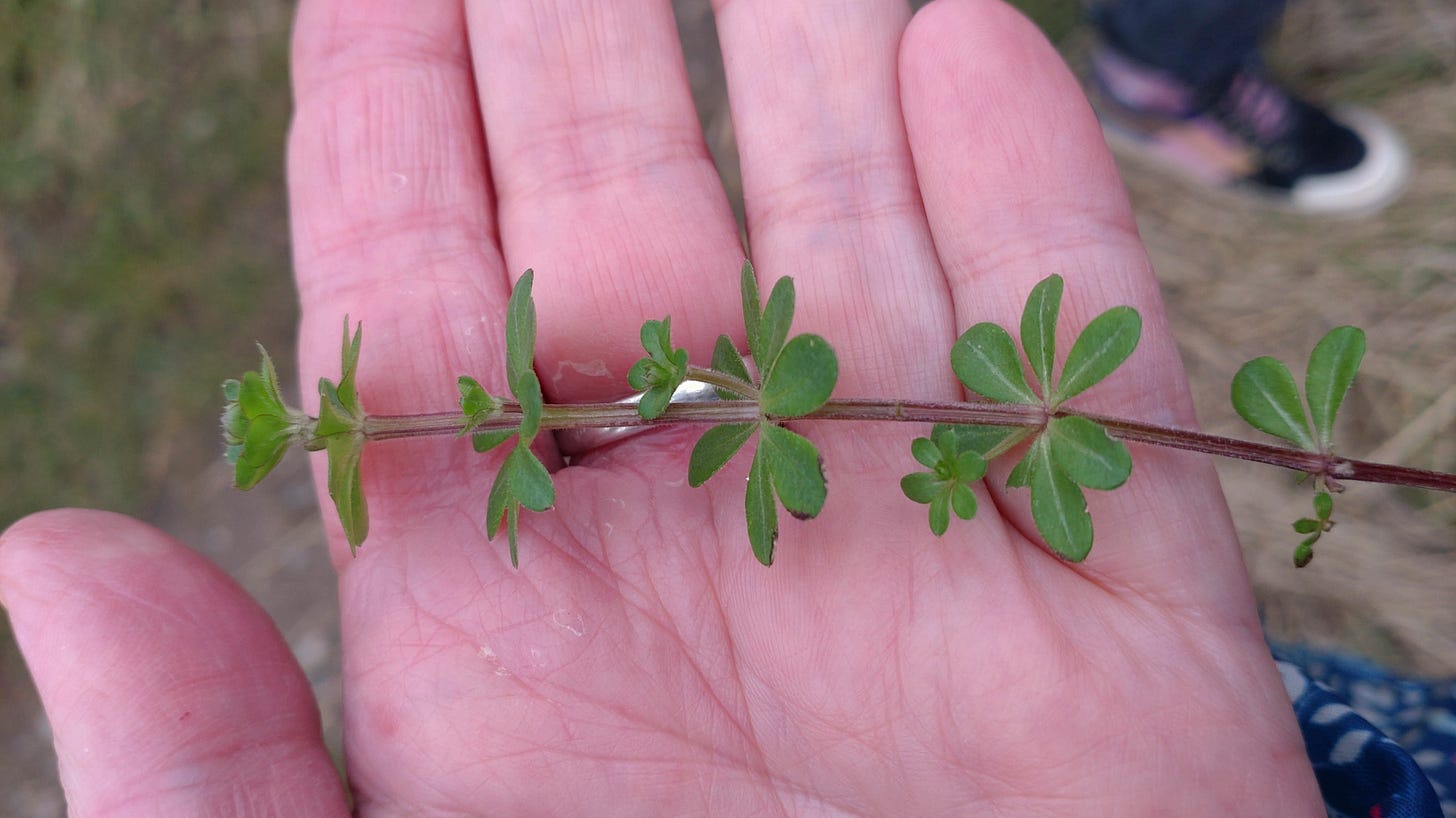Continuing the series of Everyday Adventures.
The idea of free food is very appealing, especially food that is nutritious so why not learn more about plants - many considered weeds - that are all around us? Many of these plants, as well as being edible also have medicinal properties. Wildflower Web is a great resource for finding more about benefits of different wild plants growing in the UK.
Gillian Edom runs regular foraging walks around the Bognor Regis and Chichester area and I recently had the pleasure of joining her in one of these.
Gillian is very knowledgeable and passionate about plants. Her particular area of specialism is nettles. She studied nettle fibre extraction for a postgraduate degree and collaborated on the film The Nettle Dress. She is the author of the book From Sting to Spin. You can learn more about her work here.
First a few caveats. You probably don’t want to pick anything to close to a popular path as the plants may have been contaminated by dogs - say no more! Make sure you leave plenty behind for others when you do gather. Here are a few we found and certainly a good start for my foraging journey. Disclaimer: I don’t advise eating any of these without learning about them yourself.
Many plants are edible but it’s important to know which ones. Hedge mustard - which does actually taste like mustard grows abundantly in this area. I always find it fascinating that plants can taste like something else. You won’t find this in Tescos!
Some plants should be eaten sparingly - I tend to apply that rule to all of them though. Hogweed is one of those and it can cause skin irritation.
What memories can be invoked from a plant? Who remembers the sweet honey-like flavour of the base of the white dead nettle flower? I had forgotten that we used to eat these as children when we were playing in the park but the flavour brought it all back. All nettles are edible including stinging nettles and purple dead nettle.
Broadleaf plantain is plant that is abundant in gardens - usually pulled up as a weed. As well as being nutritious it is good for healing wounds. Ribwort or ribbed plantain is another edible plantain.
Wood or jelly ear is a fungus that grows on elderflower plants. I personally would be very wary about fungi but Gillian assured us it is safe to eat. I may pass on that one...
Elderflower itself though is a well known edible plant. I remember my grandma making elderflower jelly, wine and cordial when I was a child. She knew a lot about other plants too, I wish I’d more learned from her.
Tree mallow is a plant that grows abundantly near the sea. The leaves and flowers (between June and September) are edible and can also be pickled.
Yarrow - another common garden ‘weed’ can be eaten fresh or dried in an infusion. It is also known as the first aid plant due to its healing properties. How much of that have I pulled up in the past not knowing what it was!
Another surprising discovery - gorse flowers smell and taste of coconut. I would never have thought of eating them before but they are quite delicious. Many other flowers are also edible and make a great garnish for beautifying the appearance of meals. Use these ones in moderation though.
You have probably picked blackberries in late summer but did you know you can also eat the bramble shoots in the spring? They are very tasty and work well in a stir fry.
Who like me curses sticky willy (or common cleavers) that grows everywhere in their garden? Instead of throwing it away you can soak in water over night for a refreshing drink with a slight cucumber flavour.
Sea beet can be seen everywhere around Pagham harbour and grows most of the year. It is very nutritious and can be used in place of spinach in cooking. Be careful to pick it well above the high tide mark though. Unfortunately, like in many areas these days the water company has been dumping raw sewage into the sea.
The earth provides everything we need to nourish and heal ourselves - why wouldn’t it? Our soils have been seriously depleted of nutrients by intensive agriculture over the last 50 years and even organic produce isn’t as nutrient dense as it used to be. I believe we need to all be educated about plants so we can pass this knowledge on for future generations. Not only that it is fun and exciting learning about the free food that is growing all around us. Gillian also runs foraging walks for children. To find out more and to buy her book visit her blog: https://gillianedomsbook.blogspot.com/















